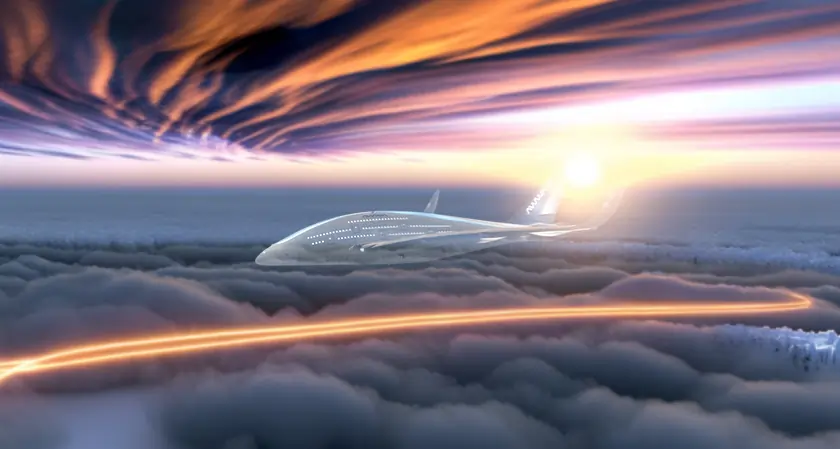Home Industry Space Exploring the future of single...
Exploring the future of single-pilot aircraft as automation reshapes the modern commercial aviation industry worldwide
Space

Business Fortune
12 October, 2023
It is very common to see two pilots in the cockpit in the aviation industry. It is not so long in the future that we get to see single pilot in the cockpit. Previously we get to see more number of people in the deck of the flight. The reason behind it was the need for people to handle task related to magazine, controlling the engine activates and monitoring of radios and communication. As we move into more advanced technology, the process of automation has taken ahead in the aviation sector too.
Three persons in the cockpit crew was very common during the 1950s and 1960s jet age, while a fourth navigator was frequently needed on bigger aircraft (like the Boeing 707) flying over water.
Although it began to appear in the late 1960s that two persons in the cockpit was not accepted as the normal for bigger aircraft until the 1980s. For example, the original crew size of the Boeing 747 and Concorde was three. Although it was not until 1989, when the Boeing 747-400 was introduced, it was a two person cockpit standard.
When the Boeing 737 was introduced in 1968 with a two-person cockpit, it set a new standard and challenged US labor unions. It was still controversial by the early 1980s, when the Boeing 757/767 was introduced. One operating airline changed the regular two-person cockpit back to three pilots after the 767 was tested with three pilots.
Promoting single-pilot aircraft systems
The two person cockpit has been considered as the new normal for at least 40 years. This is how all commercial aircraft cockpit and flying procedures are designed, with distinct roles for the pilot flying and the pilot monitoring. However, aviation systems have kept getting better over this period. With several applied technology and autopilot systems, a lot more aircraft flying and control is now automated. As a result, single pilot operations have been discussed in recent years. In 2022, the ICAO received requests from more than 40 countries to examine single pilot operations and the protocols required to support them, further formalizing the feasibility of this. The EASA has already stated that it believes single pilot services in some locations might begin as early as 2027, although this analysis is still in its early stages (you can view the original 2022 ICAO report here).
Can one pilot safely operate an aircraft alone?
It is now clear that the automation task of aviation has improved making it easier for the pilot to handle their workload. For example, the most recent auto-land systems from Boeing and Airbus are capable of physically landing an airplane without the need for human involvement. However, they are not yet able to taxi to gates or make radio calls. Additionally, there is the potential for ground control engagement and additional automation. But would there be a safety issue with just one pilot? Numerous pilots and others caution about the risks. When flying alone, there are problems with pilot awareness, weariness, and focus.
Even worse, what would happen if one pilot became powerless? To create safeguards in this area, additional automation advancements and possible ground intervention are essential. More stringent medical and health requirements for lone pilots would also be an option.
Rapid problem-solving and quick thinking are also important considerations. Will one pilot be able to manage this as well? This has been called into question by a number of previous aircraft catastrophes, including US Airways Flight 1549, in which the two pilots working together successfully brought the aircraft down safely on the Hudson River and Air France Flight 447 in 2009, in which the captain was not in the cockpit.
The money side of it
Such a concept has the support of numerous airlines. With fewer pilots, there would be huge cost savings and possibly the opportunity to plan additional flights, if it is proven safe. A pilot shortage is anticipated in the near future, with smaller airlines and the US likely to see the worst effects. Although there are other possibilities being considered, such rising the pilot retirement age, any method to ease this will be greatly appreciated.
However, the situation is not always so simple. This is already a warning from the ICAO. It highlights that there are other cost factors to take into account even if eliminating one pilot will save operating costs. These include redesigned cockpit designs and procedures, more ground assistance and communication, and higher competency levels required for solo pilots. There are further challenges. Pilots warn that it may have a detrimental effect on pilot training and mentorship. As part of a two-person crew, pilots can undergo training or refresher training in accordance with established protocols. If only one pilot was flying, such training would be slower and more difficult.
Final words
Many people may find the concept of single pilot operations unsettling. However, when four engines were eventually reduced to two or cockpit crews were gradually decreased to two, the reasoning was most likely the same. For the ICAO and aviation authorities, it is undoubtedly a challenging analysis. It must be acknowledged that aircraft have altered significantly during the 1970s and 1980s. Although safety is still of utmost importance, aviation is inherently dangerous. Any change will probably happen gradually. The plan's supporting airlines have already indicated that cargo planes could be the first flights to operate.


































